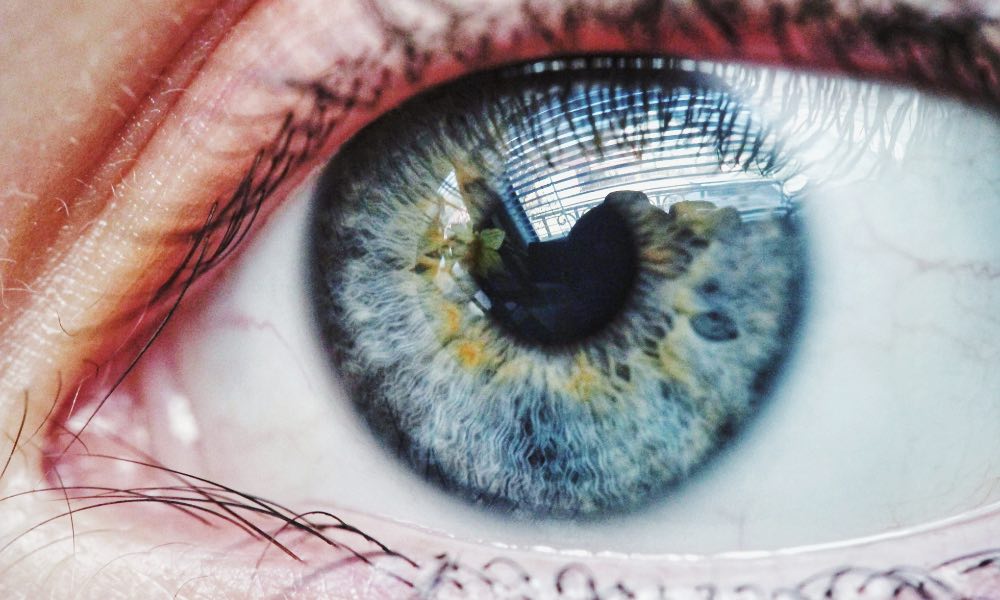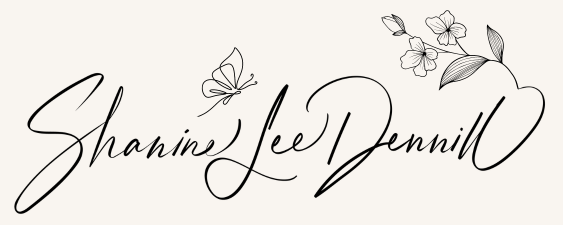
There are moments in life when the simplest experiences open a doorway to something profound. One such moment happened during what I now call the Silent Gaze of an eye exam. I’ve always wanted to go to India, but I’ve come to realize that moments of awakening don’t require a physical pilgrimage or external ritual. They can happen in the most mundane moments, like during an eye exam, where the silent gaze opened a deeper understanding of reality.
I have been half-blind in one eye since childhood, with night blindness in the same eye. Over the past few years, I’ve undergone tests to determine the cause and whether it’s progressing – more out of curiosity than concern. During a recent exam, I had two profound realizations.
So Hum: Finding Stillness in the Shifting Light
One of the tests required me to fix my gaze on an X on the screen while electrodes were attached to my lower eyelids and head. I had to resist blinking as squares shifted and lights flickered. Each round lasted up to 30 seconds – an eternity when your instincts demand you blink.
The challenge wasn’t only about keeping my eyes still; it was about keeping my inner state undisturbed amid the shifting lights and my mind’s insistence that I needed to blink.
Instinctively, I turned to my breath, silently chanting:
So (on the inhale), Hum (on the exhale).
In that rhythm, something profound shifted within me.
The Dance of Distraction and Presence
So Hum is a simple yet profound mantra, meaning “I am That” – a reminder that we are not separate from the vast existence around us. At first, distractions, like flickering lights and the urge to blink, overwhelmed me. But why practice yoga if we don’t apply it in everyday life, especially when faced with discomfort? As I deepened into the mantra, I noticed something:
The lights still flickered.
The squares still moved.
But I remained steady.
Isn’t this the essence of spiritual practice?
Of course, there were moments when the urge to blink became overpowering, and I had to find that effortless ease again.
The experience mirrored life:
- The shifting squares and flickering lights were like the ever-changing external circumstances of the world.
- The urge to blink was the mind’s tendency to react, to escape discomfort.
- And So Hum was the steady thread that kept me present, undisturbed by the external world.
True spiritual practice is not about stopping the world but remaining unshaken within it, finding internal ease.
The Red Dot, The Void, and the Art of Seeing
For another test, I sat in complete darkness for 15 minutes to allow my eyes to acclimate. Then, I was instructed to stare at a red dot surrounded by an immense black void (while every so often light flashed). It felt like a meditation as well – offering a glimpse into existence itself.
Shiva (The Void) & Shakti (The Womb)
As I gazed into the darkness around the red dot, I felt a deep stillness, a vastness that reminded me of Shiva – the formless, the infinite, the silent witness. In tantra, Shiva represents pure consciousness, the boundless void from which all things arise.
The longer I sat with the blackness around the red dot, the more it didn’t feel empty; it was full, holding space for all potential. It reminded me of a fetus in complete darkness in the womb. Resting in the womb of creation itself.
This dark womb of creation is the dance of Shiva and Shakti – Shiva as the infinite void, and Shakti as the boundless potential of creation within it.
The Union of Shiva & Shakti: The Red Dot of Creation
And then, there was the red dot in the eye exam. This reminded me of The Bindu.
In tantric symbolism, the Bindu represents the origin of manifestation, the seed from which all existence emerges and into which everything dissolves. Shiva represents the formless void, while Shakti is the energy bringing form into being. The Bindu is the union of Shiva (pure consciousness) and Shakti (creative energy) and also represents Shakti’s creative power.
This is the eternal dance of Shiva and Shakti – stillness and motion, emptiness and fullness, and it was reflected in my experience:
Can we embrace the void without fear, knowing it holds us?
Can we recognize that within stillness, life is always unfolding?
As a side note, the word ‘Bindi‘ is derived from ‘Bindu‘ and represents a symbol of spiritual awakening. Typically, the bindi is a bright dot placed in the center of the forehead, often made from sandalwood paste, symbolizing the third eye, inner wisdom, and the activation of higher consciousness.
Seeing Beyond the Physical
In everyday life, we are constantly bombarded with shifting images, demands, and distractions. Just like the flashing lights in the exam, life throws obstacles that pull our attention away. But when we practice stillness – whether through meditation, breathwork, or simply being present in the moment – we cultivate the ability to see beyond distractions (the silent gaze) and into the deeper truth beneath them.
Yoga, tantra, and spirituality aren’t about escaping the world, but about seeing it more clearly. The eye exam became a teaching: true vision isn’t just about what we see with our eyes, but how we perceive the very essence of reality itself.
Shanine Dennill
Shanine's speciality is bringing Rituals and Rest to students to awaken to (and remember) the sacred. She offers yoga and meditation classes, powerful nature and moon events, and profoundly transformative teacher trainings. Her spiritual journey began at a young age when the death of family members touched her and made her seek the meaning of life and death. This has led her on a quest to live and share with others the wisdom of living life with deep reverence, fully embodied, and to our greatest potential. She is also an Ayurveda Health Advisor.






 Perfection is effortlessness.
I invite you to explore this space with me - on the mat, in stillness, or within your own sacred becoming.
@movati.burlington @movati.athletic
#sacredembodiment #sacredperfection #effortlessness #yogasequence #soulfulmovement #spiritualpractice #tantrayoga #embodiedwisdom #poweryoga #yogateacherlife #consciousmovement #radicalacceptance #yogaflow #sacredself #embodiedyoga
#sacredremembrance
Perfection is effortlessness.
I invite you to explore this space with me - on the mat, in stillness, or within your own sacred becoming.
@movati.burlington @movati.athletic
#sacredembodiment #sacredperfection #effortlessness #yogasequence #soulfulmovement #spiritualpractice #tantrayoga #embodiedwisdom #poweryoga #yogateacherlife #consciousmovement #radicalacceptance #yogaflow #sacredself #embodiedyoga
#sacredremembrance
 Endings: Connection & Letting Go
Endings: Connection & Letting Go 

 Immerse yourself in nature’s harmony as we flow through gentle poses under a beautiful, large tree. Feel the connection to Mother Earth alongside these incredible pollinators. We practice at a safe distance but can still see them at work.
Immerse yourself in nature’s harmony as we flow through gentle poses under a beautiful, large tree. Feel the connection to Mother Earth alongside these incredible pollinators. We practice at a safe distance but can still see them at work.

 Breathe in the tranquility, exhale the stress. Let’s come together to nurture our bodies, minds, and spirits in this unique and enchanting experience.
Breathe in the tranquility, exhale the stress. Let’s come together to nurture our bodies, minds, and spirits in this unique and enchanting experience. 

 Date: Sunday, July 28th
Date: Sunday, July 28th
 Time: 10:00 am
Time: 10:00 am
 Location: @backedbybees
@ingrid._.louise will be co-teaching with Shanine (so expect cold cloths)
Location: @backedbybees
@ingrid._.louise will be co-teaching with Shanine (so expect cold cloths)  And then enjoy a refreshing Honey Soda after class.
Bring your mat, a water bottle, and an open heart. Can’t wait to see you there!
And then enjoy a refreshing Honey Soda after class.
Bring your mat, a water bottle, and an open heart. Can’t wait to see you there! 
 #YogaWithTheBees #YogaAndTheBees #NatureConnection #SacredRemembrance #YogaCommunity #MindBodySpirit #BeeLove #Yoga
#YogaWithTheBees #YogaAndTheBees #NatureConnection #SacredRemembrance #YogaCommunity #MindBodySpirit #BeeLove #Yoga